COVID-19 stats continue bad trend across state, Monroe County: “These are your friends, these are your neighbors.”
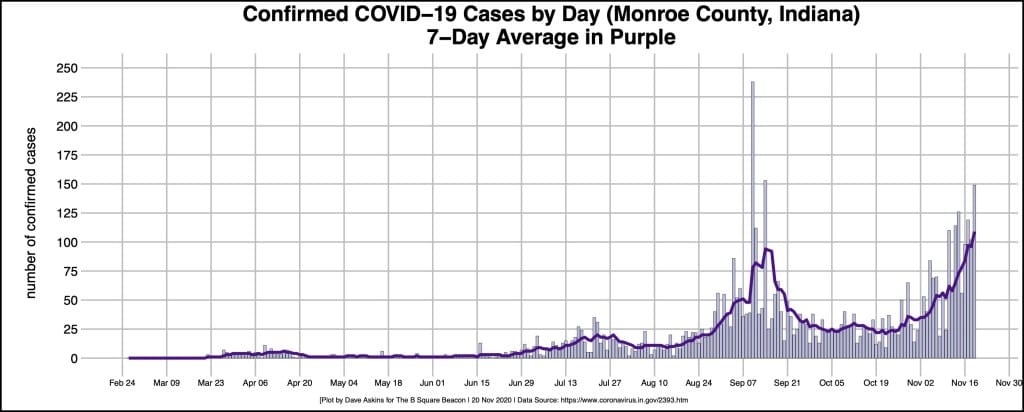
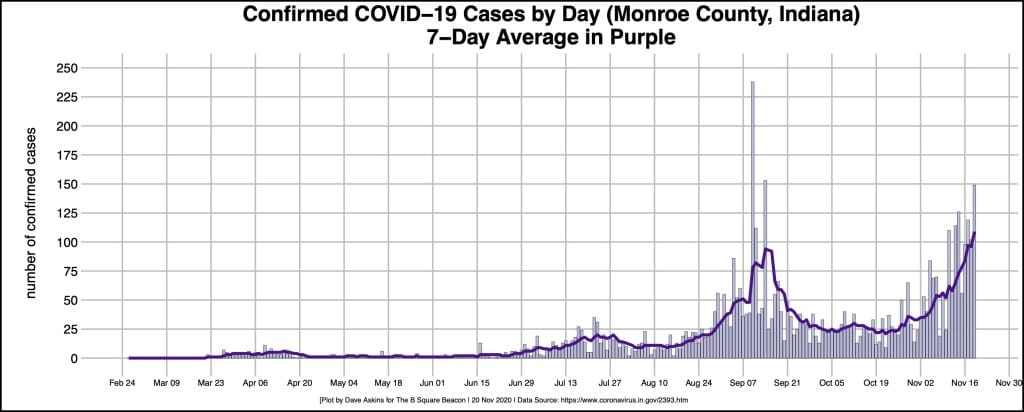
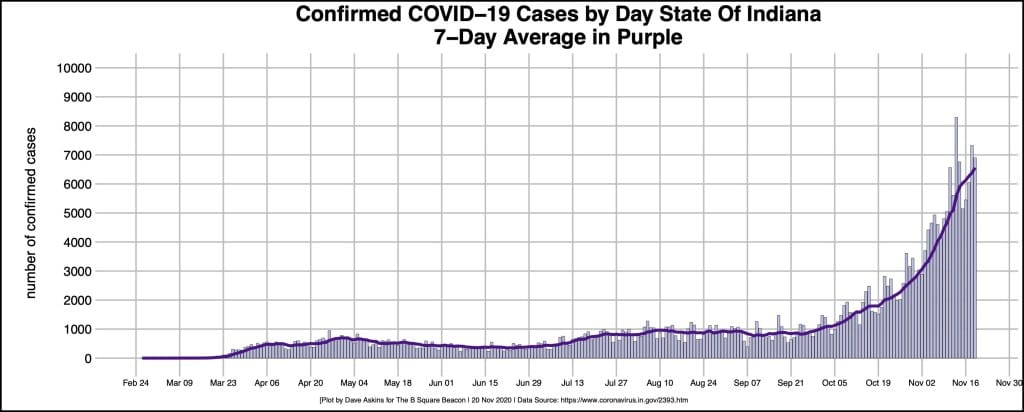
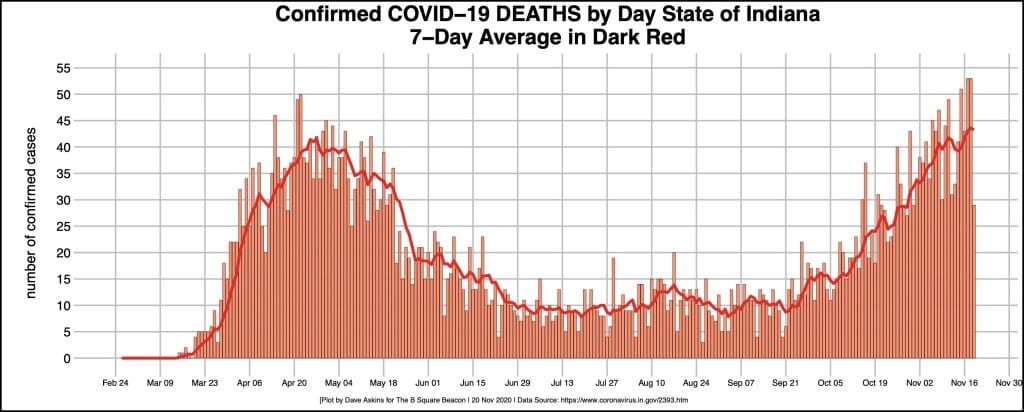
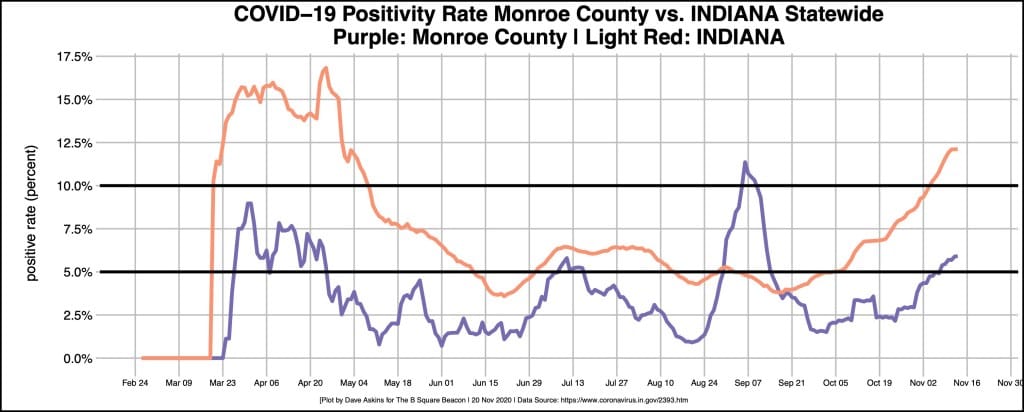
Friday’s weekly press conference of local leaders to talk about COVID-19 response came on another day of bad COVID numbers for Monroe County and the rest of Indiana.
Brian Shockney, who’s president of IU Health’s south central region, said in his region, a total of 4,438 inpatients had been tested and 556 of those have been “very, very sick.”
Shockney described the patients this way: “These are your friends, these are your neighbors. These are those people that you know, your family members.” He added, “This is a serious disease and we need to take it seriously, now more than ever.”
Monroe County itself, which includes IU Health Bloomington and Monroe Hospital is showing a continuous upward increase in patients, Shockney said. Visitor policies have been revised to eliminate visits, with a few exceptions.
Current statewide hospital census totals, according to the Indiana State Department of Health dashboard, have hit 3,077 patients. That’s about 75 percent more than the spring peak.
Confirmed case case counts continue to climb. On Friday, the statewide 7-day rolling average per day stood at around 6,500, which is six times higher than the average at the start of October. The countywide rolling average now stands at 109 confirmed cases per day, which eclipses the mid-September high of 94. That earlier spike was chalked up to the return to campus by Indiana University students.
Monroe County has added three deaths in the last week, bringing the total to 45 since the pandemic hit the area. Statewide, the rolling average of daily deaths now stands at 43, which is a bit higher even than the spring peak. About half of the state’s 4,952 deaths have been recorded since the beginning of July.
Positivity rates continue to climb, locally and statewide. Statewide, the rolling 7-day average positivity rate was around 12 percent, continuing its upward trend. In Monroe County, the 7-day average positivity rate was around 5.9 percent, which is lower than the statewide number but on a parallel upward trend.
Typically at least one of the press conference participants will offer some words of encouragement. On Friday, Monroe County health administrator Penny Caudill said her office’s thought for today was “We can’t always choose the music that life plays for us. But we can choose how we dance to it.”
Caudill’s take on that thought: “And so I would say: Let’s dance. Let’s dance together. Let’s smash COVID-19 and 2020. And we will have a better 2021.”
Part of Bloomington mayor John Hamilton’s report included a shoutout to Indiana University’s public safety department for the help it has given the city-county 911 dispatch center in the wake of confirmed positive COVID-19 tests of four dispatchers.
Hamilton said that for one two-hour period, the IU dispatch center handled all the calls while the city-county center was disinfected in the wake of the positive tests.
Caudill encouraged those who test positive to go ahead and notify their close contacts of their positive test and to tell them to expect a call from contact tracers. That’s because, as Caudill put it, “Content tracing at the local level and at the state level is stressed.” As the number of confirmed positive cases increases, the job of reaching out to close contacts gets difficult for the state and local tracers.
Caudill said that people who test positive should notify their close contacts so that they know right away that they need to start quarantine.
Responding to a question, Caudill said that no significant number of positive tests has been traced to dining establishments. Caudill said restaurants have been proactive in their response when their employees have been infected. In some cases, they’ve closed and they’ve notified the public, Caudill said.
Spread from staff to patrons has not been seen, Caudill said. Caudill said she thinks the risk is in the other direction. “I would say in a restaurant, the staff is at greater risk from the patrons than the other way around.”
The risk of spread from patrons to staff was part of the reason the health department adopted new regulations on queuing at bars, to allow masked customers to approach the bar to order drinks and take them back to their tables. That means servers would not have to wait on tables of unmasked customers.
As additional measures are contemplated, Caudill said, “No one wants to go back to closing everything.” She continued, “There are ways to be safer now than we were in March because we know more. And we just need to act on those things.” Those things include wearing masks, maintaining distance, and using proper hand hygiene.
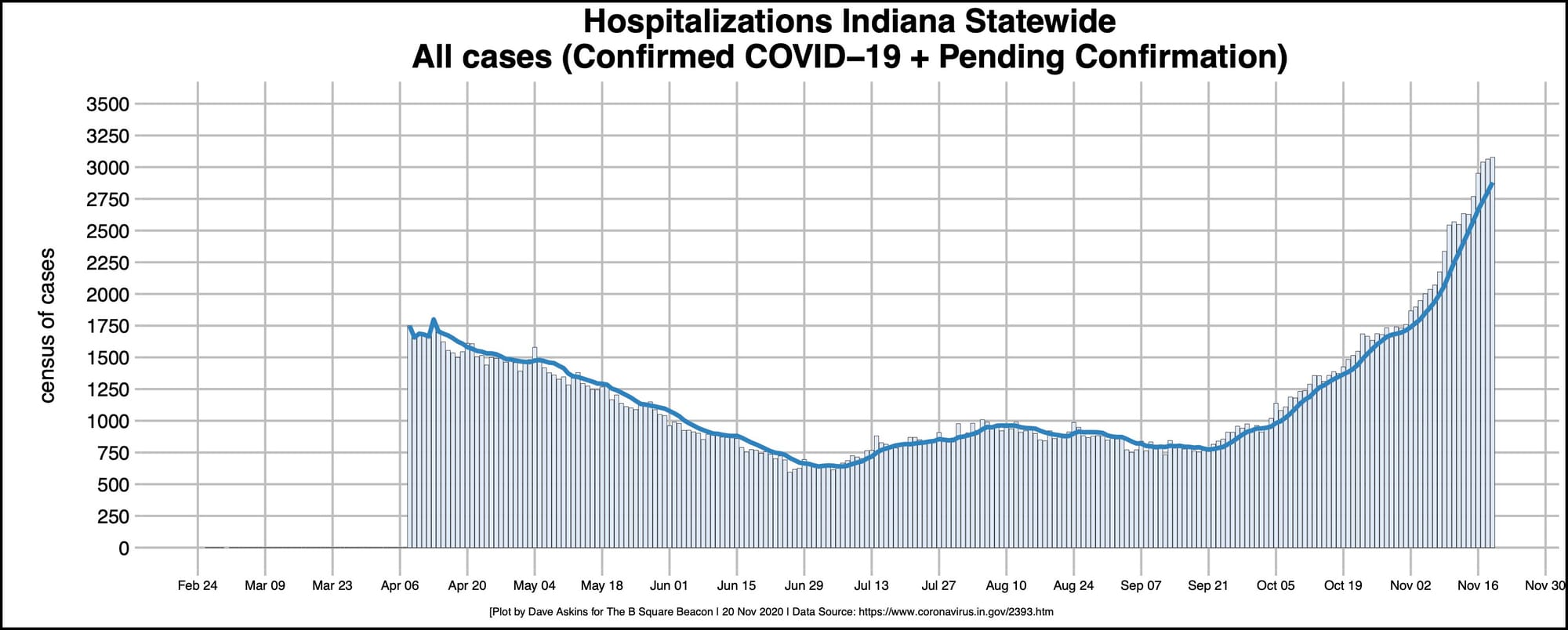
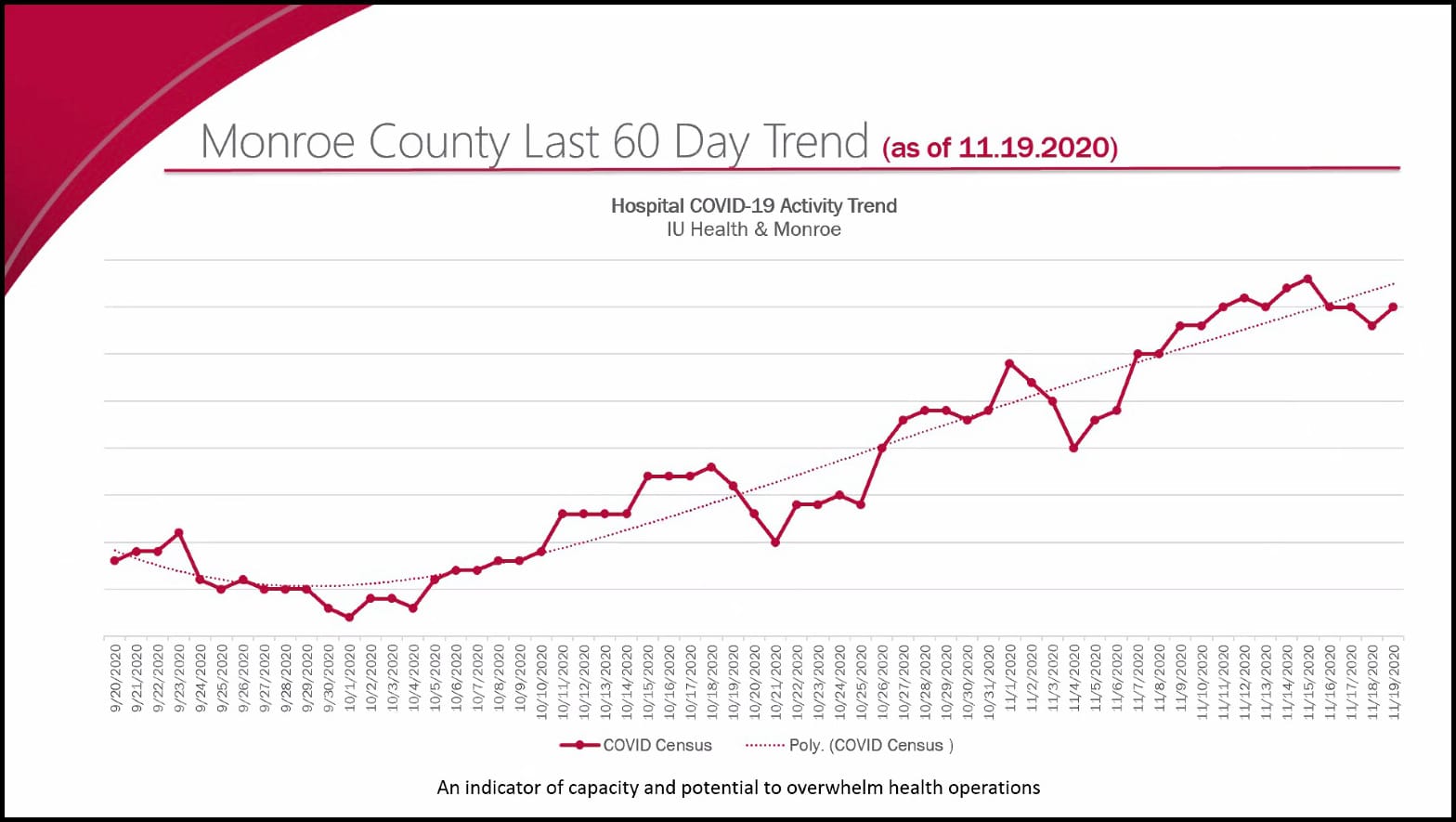




Comments ()